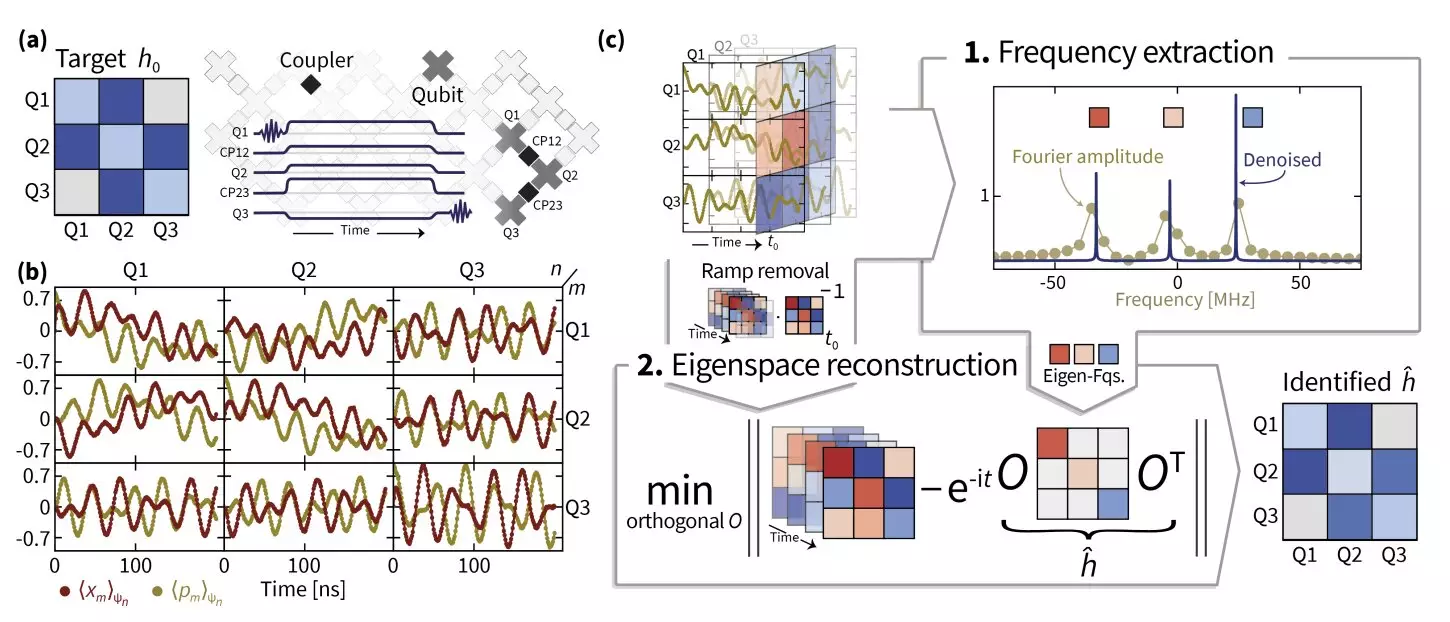In the rapidly evolving landscape of quantum computing, researchers from several esteemed institutions, including Freie Universität Berlin and the University of Maryland, along with teams from Google AI and Abu Dhabi, have taken significant strides towards refining the estimation of Hamiltonian parameters governing bosonic excitations in superconducting quantum simulators. Through rigorous experimentation and innovative methodologies, they have tackled previously insurmountable challenges in quantum simulations, as outlined in a paper recently shared on arXiv.
The quest for accurately estimating Hamiltonian parameters—a foundational aspect of quantum mechanics—emerges as a crucial step toward fully realizing the potential of quantum simulators. Jens Eisert, a key figure in this research initiative, recounted his initial foray into solving a complex problem that posed significant challenges for the Google AI team while they were calibrating their Sycamore superconducting quantum chips. The team encountered difficulties implementing Hamiltonian learning techniques, which are pivotal for accurate quantum state dynamics representation. Eisert’s initial optimism for an easy resolution gave way to the realization of the intricate nature of Hamiltonian estimation, highlighting the sophisticated demands of experimental data interpretation.
Recognizing the potential for collaboration, Eisert enlisted the help of talented Ph.D. students Ingo Roth and Dominik Hangleiter, embarking on a journey that would take several years. Through this collaboration, they began to develop a combination of superresolution techniques and manifold optimization, aiming to fine-tune the Hamiltonian parameters derived from experimental measurements.
Superresolution serves as a crucial method for enhancing the resolution of eigenvalue estimations and accurately capturing Hamiltonian frequencies in superconducting systems. This innovative approach allowed the researchers to break through previous barriers and achieve a new level of precision. The integration of manifold optimization techniques proved equally essential, enabling them to recover eigenspaces of the Hamiltonian operator in this complex high-dimensional landscape.
It is essential to note that the transition processes—switching Hamiltonians on and off—pose nontrivial challenges due to their non-instantaneous and non-unitary nature. As Eisert noted, errors in these processes can mask true Hamiltonian behavior, complicating any resultant fits of Hamiltonian evolution. To address these obstacles, the team eventually devised a novel methodology known as TensorEsprit, which played a vital role in reliably recovering Hamiltonian parameters across a larger span of coupled superconducting qubits.
TensorEsprit represents a transformational leap forward for Hamiltonian learning: by synergizing superresolution with manifold optimization, it yields robust methodologies for identifying Hamiltonian parameters—up to 14 coupled superconducting qubits distributed across Sycamore processors. The early stages of their research underscored the importance of recognizing the foundational aspects of Hamiltonian learning, eventually leading to critical understandings: achieving meaningful eigenspace recovery necessitates precise eigenvalue knowledge.
The team’s research unveiled why Hamiltonian learning remains underrepresented in literature—highlighting the complexities involved in translating theoretical models into practical applications with actual experimental data. However, the preliminary results demonstrate significant potential for scalability within large quantum systems, paving the way for broader applications in quantum processors.
Looking ahead, Eisert and his team are poised to explore systems interactions further while leveraging concepts derived from tensor networks in the context of cold atoms, a field pioneered by physicist Immanuel Bloch. These endeavors highlight a critical academic trajectory: as researchers grapple with fundamental questions surrounding the characterization of Hamiltonians, they also contribute to the broader implications of quantum technologies.
The crux of their future inquiries lies in understanding how accurately the Hamiltonian parameters can be derived from empirical data—a cornerstone of advancing predictive capabilities within quantum mechanics. Such investigations not only augment our theoretical grasp of Hamiltonian operators but also enhance the practical applicability across quantum technologies.
Through their innovative approaches to analog quantum simulation, Eisert and his team unlock new avenues for experimenting with intricate quantum systems—closely mimicking real materials under highly controlled laboratory conditions. By illuminating these sophisticated dynamics, their work signals an encouraging horizon for both academic inquiry and potential technology advancements, reiterating the intrinsic value of precision in the ever-compelling realm of quantum science.


Leave a Reply